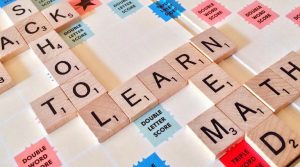One of the best parts of my job as a systems improvement coach is watching teams grow—not just in their skills, but in their mindset and collaboration. Recently, I had the privilege of working with a team of high school science teachers, and let me tell you, their transformation was nothing short of inspiring!
The Starting Point: A Group, Not a Team
At our first meeting, it was clear: these teachers were passionate about their work, but they were operating in silos. Each had their own approach, their own materials, and their own timeline. Collaboration? Minimal. Alignment? Not really happening.
But I knew that with the right structures and conversations, they had the potential to become something greater—a true team that could support each other, streamline their efforts, and ultimately improve student learning.
The Turning Point: Small Steps, Big Shifts
Early on, a couple of teachers stood out-not because they were excited about collaboration, but because they were hesitant about it. One was concerned that she was going to have to change everything she was doing which was going to take too much time. The other was concerned that she was going to have to turn all of her own personal materials over to other team-members which seemed “unfair.” Over the course of our time together, we focused on building trust, sharing strategies, and creating space for real collaboration.
We first introduced peer observations. Instead of just talking about teaching, they had a chance to see each other in action and observe how their colleagues engaged students, structured lessons and fostered academic discussion in their classrooms. Since the school and district had made student discourse a priority, these classroom visits helped teachers see real examples of students actively engaging in discussions, explaining their thinking, and learning from one another.
At our next session, something shifted. The team planned a common assessment together–not just deciding what to test but discussing how they would teach key concepts in a way that encouraged students to engage with one another. They considered how to embed strategies into their lessons, ensuring students weren’t just passively learning but making sense of material together. Then after giving the assessment, they came back to analyze student work, reflecting on how the learning played a role in student understanding.
And those previously hesitant teachers? They weren’t just participating–they were asking for more. In fact, they wanted extra time to align pacing, plan lessons and continue refining ways to get students talking, thinking, and engaging more deeply with the content. They started seeing each other as resources, not just colleagues.
The Takeaway: When Collaboration Becomes Culture
This wasn’t just about getting teachers to plan together, it was about shifting a culture. When teams move from isolation to collaboration, everyone wins–teachers, students, and the entire school community.
Seeing their excitement at the end of our time together was a reminder of why I love this work. When educators collaborate with purpose, their collective impact on students multiplies.
As education researcher John Hattie puts it, “Accomplishing the maximum impact on student learning depends on teams of teachers working together, with excellent leaders or coaches, agreeing on worthwhile outcomes, setting high expectations, knowing the students’ starting and desired success in learning, seeking evidence continually about their impact on all students, modifying their teaching in light of this evaluation, and joining in the success of truly making a difference with student learning outcomes.” John A.C. Hattie, Visible Learning for Teachers: Maximizing Impact on Learning


